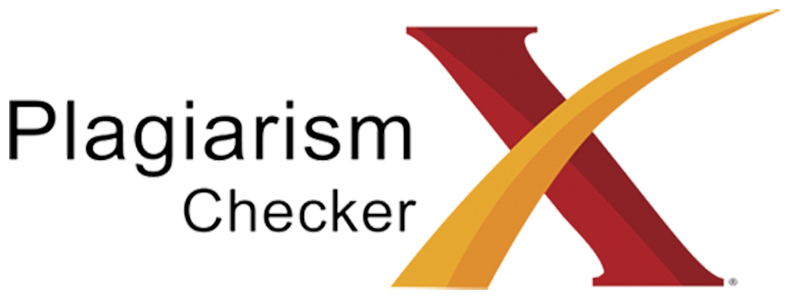Strategi Diversifikasi Produk Buku Fiksi Sebagai Pengembangan Karya Tugas Akhir Penerbitan
DOI:
https://doi.org/10.54259/mukasi.v1i3.1093Keywords:
Diversification, Product Development, Publishing, Fiction BooksAbstract
This research departs from the lack of development in the work of the Final Project students of the Publishing Study Program, especially in books with the fiction genre. This limitation causes the work produced in terms of content and medium is still monotonous and has not developed in the desired direction. This research uses the concept of product development strategy which is commonly used in business and industry, especially the publishing industry. This study uses a qualitative descriptive method to analyze, describe, and explain the diversification that may be used for students of Publishing. The object of the research is the student's final thesis product Publishing from 2015 to 2020. This research also aims to find a new formulation for writing a publishing final project product, especially in the fiction category. The results of this study show that in the 2015 to 2020 period, there are only 4 types of fiction that keep repeating itself, and there is only 1 work in the form of a flashlight book as part of manual product development. This research resulted in a further mapping of the stages of diversification that students could choose and their product forms.
Downloads
References
Assauri, S. (2013) Strategic Management. Raja Grafindo Persada. Jakarta
Azuma, Ronald T. (1997) A Survey of Augmented Reality. Hughes Research Laboratories. Malibu.
Buchari, Alma. (2008) Manajemen Pemasaran dan Pemasaran Jasa. Bandung: Alfabeta.
Bulan, T.,P.,L. (2017) Pengaruh Diversifikasi Produk dan Harga terhadap Kepuasan Konsumen. Jurnal manajemen dan keuangan, vol. 6, no.1, pp.679. ISSN 2252-844
Damono, S.D. (2009) Pegangan Penelitian Sastra Bandingan. Pusat Bahasa. Jakarta.
Damono, S.D. (2012) Alih Wahana. Editum . Jakarta
Fatmawati, S. (2019) Publishing Industry Sebagai Pendukung Ekonomi Kreatif (Ekraf) Bagi Pustakawan Di Era Digital. BIBLIOTIKA : Jurnal Kajian Perpustakaan dan Informasi Vol. 3 No.1
Gorbala B.T. dan Hariadi M., (2010) “Aplikasi Augmented Reality untuk Katalog Penjualan Rumah”, Teknik Elektro. ITS Surabaya.
Herliani, L. (2015) Analisis Pemanfaatan Situs Jejaring Sosial Facebook sebagai Media Promosi Anggota BUSAM (Bubuhan Samarinda), eJournal Ilmu Komunikasi, vol. 3, No. 4, 2015, hlm. 218
Kotler, P., Kevi,L.K. (2007). Manajemen Pemasaran. Edisi 12, Jilid 1. Jakarta: PT.Indeks.
McQuail, D. (1994) Teori Komunikasi Massa suatu pengantar. Erlangga. Jakarta
Milgram, K. (1994) Taxonomy of Mixed Reality Visual Display. IEICE Transaction on Information and Systems. Hughes Research Laboratories. Malibu.
Nurgiyantoro, B. 2010. Penilaian Pembelajaran Bahasa. BPFE. Yogyakarta
Rambatan, G.,B. (2015) Rencana Pengembangan Penerbitan Nasional 2015-2019.(http://indonesiakreatif.bekraf.go.id/ikpro/wp-content/uploads/2015/07/ Rencana-Pengembangan-Penerbitan-Nasional.pdf). Pada Tanggal 12 Mei 2019. (e-book)
Sedarmayanti. (2014) Manajemen Strategi. Refika Aditama : Bandung
Sugito. (2008) Pemasaran Jasa. Rineka Cipta. Jakarta
Sulaksana, U. (2007). Intergrated Marketing Commmunications: Teks dan Kasus. Pustaka Pelajar. Yogyakarta
Suratni. (2019). Upaya Program Studi Penerbitan dalam mengangkat kearifan local di Indonesia melalui buku. Jurnal MetaCommunication. Vol 4 No.1. pp 27-34.
Tjiptono, F. (2007) Pemasaran Jasa. Bayu Media. Malang
Undang-undang Rapublik Indonesia Nomor 18 Tahun 2002 Tentang Sistem Nasional, Penelitian, Pengembangan dan Penerapan Ilmu Pengetahuan dan Teknologi.
Wahyudi, A. (2006) Strategi Diversifikasi Produk. Mandar Maju. Bandung.
Trianto. (2017). Mendesain Model Pembelajaran Inovatif-Progresif, Jakarta: Kencana.
Purwanto, Ngalim. (2017). Prinsip-Prinsip dan Teknik Evaluasi Pengajaran, Bandung: PT Remaja Rosdakarya.
Downloads
Published
How to Cite
Issue
Section
License
Copyright (c) 2022 Refi Yuliana, Suratni, Prily Fitria Aziz

This work is licensed under a Creative Commons Attribution 4.0 International License.
Hak cipta pada setiap artikel adalah milik penulis.
Penulis mengakui bahwa MUKASI (Jurnal Ilmu Komunikasi) sebagai publisher yang mempublikasikan pertama kali dengan lisensi Creative Commons Attribution 4.0 International License.
Penulis dapat memasukan tulisan secara terpisah, mengatur distribusi non-ekskulif dari naskah yang telah terbit di jurnal ini kedalam versi yang lain, seperti: dikirim ke respository institusi penulis, publikasi kedalam buku, dan lain-lain. Dengan mengakui bahwa naskah telah terbit pertama kali pada MUKASI (Jurnal Ilmu Komunikasi).





























